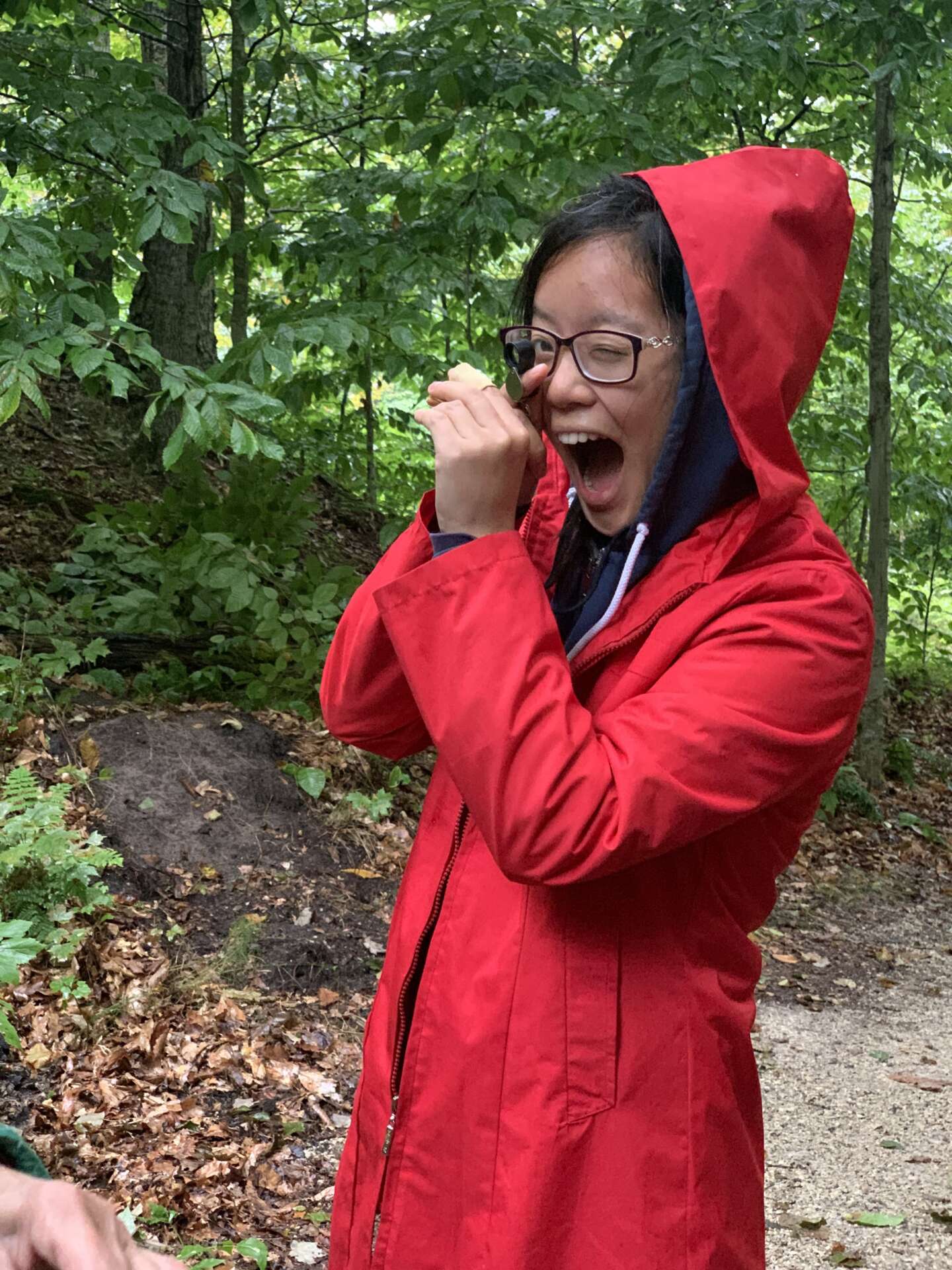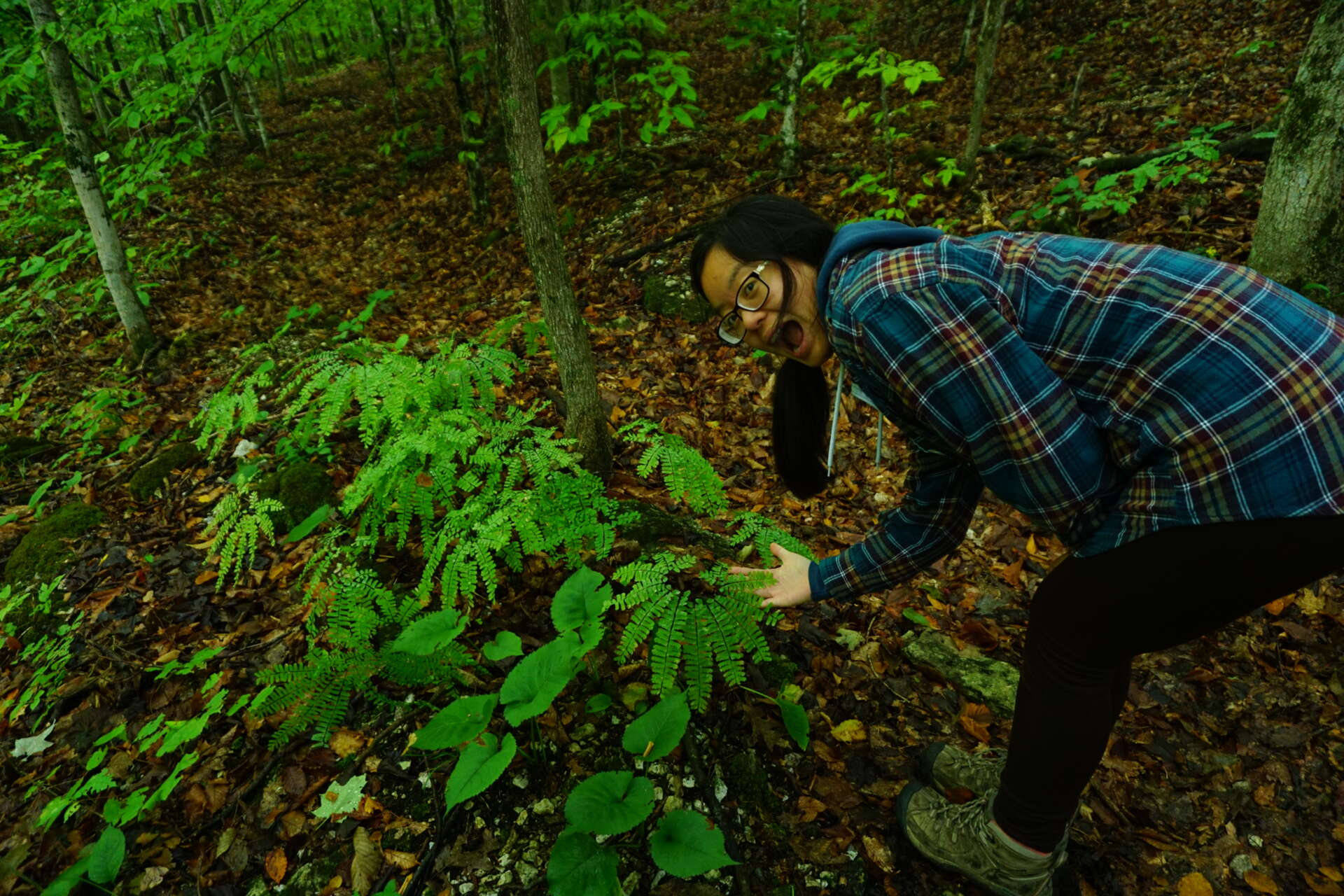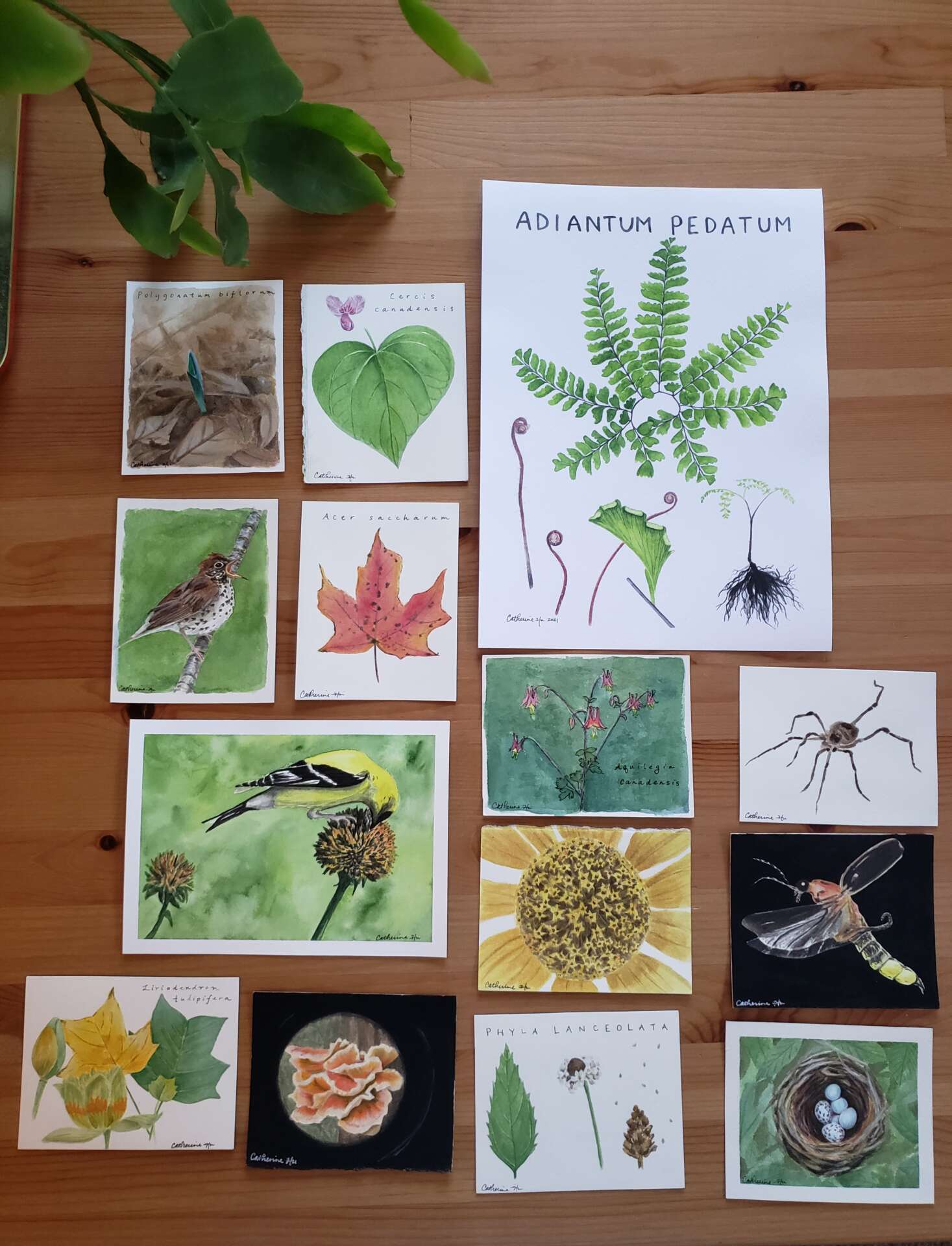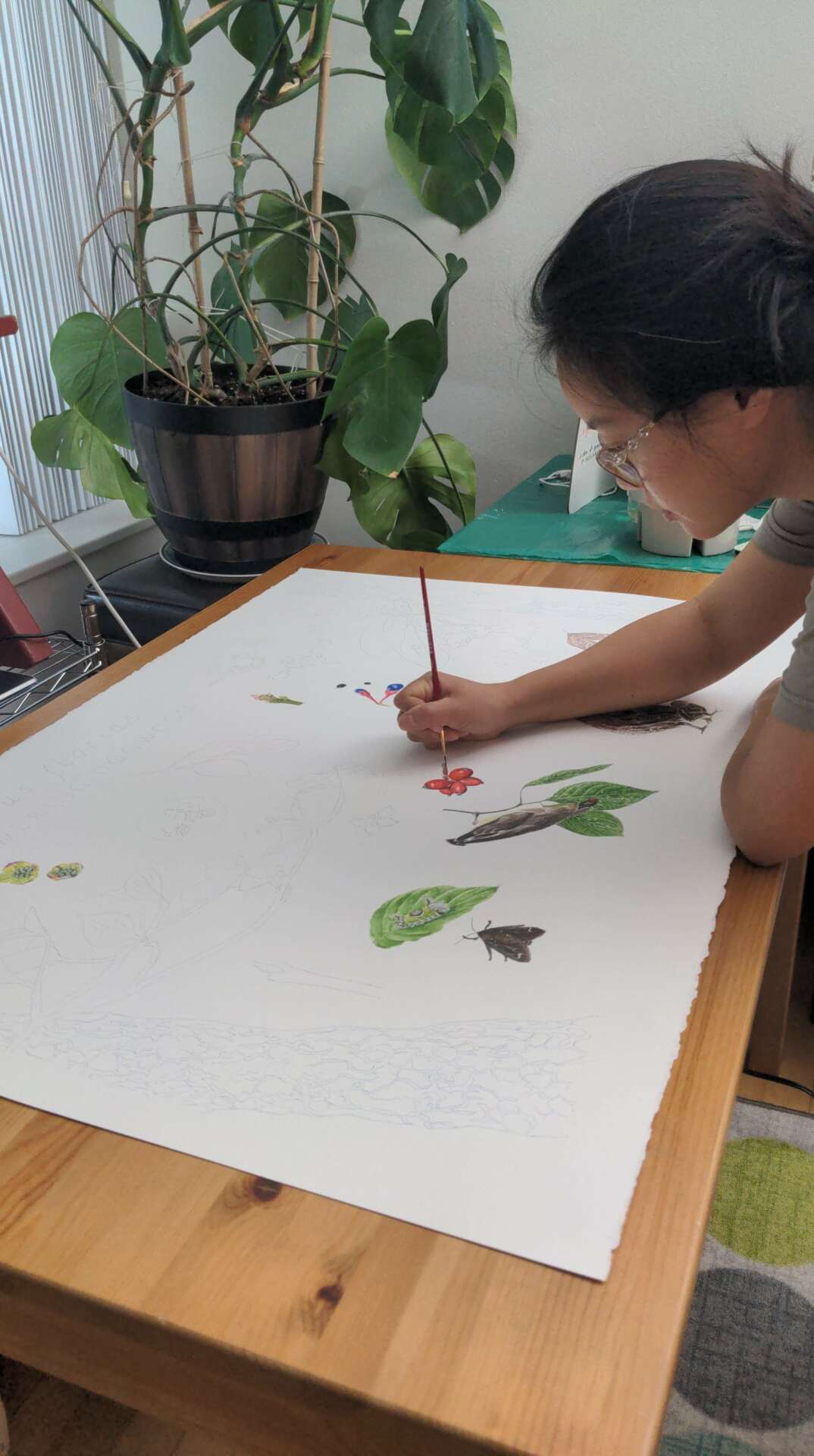Catherine, can you open up about a risk you’ve taken – what it was like taking that risk, why you took the risk and how it turned out?
The biggest, life changing risk I’ve taken so far is giving up a potentially lucrative and stable career path in engineering to pursue environmental conservation work. I always had some interest in nature and the environment but was also a practical person. In college, I thought I could work in industry on sustainability projects as an engineer, but as much as I tried, the day to day tasks did not appeal to me. I made it through the degree but after college, I was exhausted, burnt out, and lost.
I took a gap year, where I worked at a preschool, taught piano, and volunteered at nature preserves and parks around home. During this year, I worked with a stewardship manager who introduced me to conservation, specifically ecological restoration. He taught me the basics of how to cut invasive shrubs, collect seed, do prescribed burns, and conduct monitoring. I was fascinated with the idea that humans could do something to help heal the land. I discovered my interest in plants and applied to grad school. I completed a Master’s program in Environmental Conservation. As a part of the program, I interned at a nature reserve. It was a physically demanding, sweaty, tick and chigger filled six months but so interesting and extremely rewarding. The people I met were beyond amazing and the experience solidified my career direction. After grad school, I worked for five years doing ecological restoration on the ground with a crew. Recently I took a job with the Field Museum as an ecologist and now work on restoration and native plantings in the Chicago region.
There were no guarantees that I could have made a living doing good work that I find challenging and interesting, but somehow with lots of luck, meeting the right people, and working hard, it happened for me. I’m glad I was brave enough to take a chance to build the life I wanted, and I’m so grateful for the support and guidance I received along the way.
Awesome – so before we get into the rest of our questions, can you briefly introduce yourself to our readers.
I am an ecologist specializing in plants of the Midwest with experience in ecological restoration of prairies, savannas, and woodlands. I’m also a scientific illustrator, using watercolors to depict native plants and animals realistically. When I had one of my first field work experiences as an intern at a nature reserve, I lived on-site away from the city and with lots of free time. I would spend my weekends trying to learn plants by taking hikes and collecting specimens to press in a notebook. I started painting them as a way to spend more time on each species; I was forced to carefully observe the number of petals, leaf shape, what shade of green it was, etc. At the time I had been painting for fun for two years and did loose sketches that captured the basic impression of the plant. Over time, as I progressed in my career in ecology and restoration, I needed and wanted to learn more about the flora and fauna I encountered. As my painting skills improved along the way, I began incorporating more details. The push towards realism has made me a better botanist and ecologist, and I have especially enjoyed learning more about plant-animal interactions.
My focus has always been on ecology and conservation, but my art has been a lovely side project to accompany this work. I sell prints of my paintings on Etsy and occasionally take on commissions when they align with my goal of promoting or featuring native plants and animals of the Midwest. I hope that from my artwork, people will learn something and become more curious about the natural world.

Are there any resources you wish you knew about earlier in your creative journey?
I am self-taught and have learned painting through Youtube videos, trial and error, and hours of practice. I do notice sometimes that I am missing technical skills and would have benefited through taking some illustration or watercolor classes earlier on. It is frustrating when I know something doesn’t look right but don’t know how to fix it. While I was exploring my art style, it would have been extremely helpful to have someone look at my pieces from an outside perspective and provide feedback. While I think of myself as an observant person, I rely so much on finding “the perfect” reference photos because I only know how to paint what I see but don’t really have a good understanding of how objects interact with light and how to compose pieces to look “natural.” I’m always learning though, and it’s never too late to take classes!



What do you think is the goal or mission that drives your creative journey?
My creative journey as a watercolor illustrator started as a way to help me learn plants and become better at my job. I started sharing it because I wanted to spread the word about the importance of native plants.
A native plant or animal is one that naturally occurs in a region without human introduction and has evolved with the area’s climate and geology over a long period of time. Native plants are especially important because they are at the base of the food chain, supporting native insects, many of which do not prefer or cannot use non-native plants as food or shelter. These insects in turn support small mammals, birds, and then larger animals. Without native plant diversity, other creatures cannot thrive.
Many of these native plants and animals are struggling now due to humans’ ability to transport living things quickly across the globe. Most landscaping around houses and businesses include non-native ornamental plants, some of which have become invasive, escaping into natural areas and crowding out the natives. At best, they have no ecological value in their current location. I don’t believe human preference should be more important than ecological health, and I hope my artwork inspires people to appreciate all the complexity and beauty in nature, even when there’s no obvious benefit to humans.
Contact Info:
- Website: http://sedgeshaveedgesart.com/
- Instagram: @sedgeshaveedges.art
- Facebook: https://www.facebook.com/groups/sedgeshaveedges.art
- Other: Etsy shop: https://www.etsy.com/shop/SedgesHaveEdgesArt
Image Credits
Sophia Shui Brian Lu


